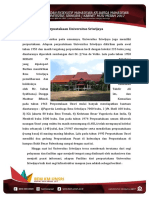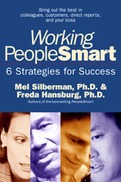Active Learning Mel Silberman Pdf
Active Learning a. Pengertian Active Learning Active Learning merupakan suatu metode pembelajaran yang mengajak siswa untuk belajar secara aktif, mereka secara aktif menggunakan otak, baik untuk menemukan ide pokok dari 9 Ibid, hlm.
- Active Learning Mel Silberman Pdf Download
- 101 Active Learning Mel Silberman Pdf
- Active Learning Mel Silberman Pdf Online
- Active Learning Mel Silberman Pdf Book
- Author : Melvin L. Silberman
- Release Date : 20 April 2015
- Publisher : John Wiley & Sons
- Genre : Business & Economics
- Pages : 400
- ISBN 13 : 9781118972014
- The Primary Program: Growing and Learning in the Heartland Active Learning in the Classroom: Common Understandings 152 Active Learning Through Play and Exploration Play is the fundamental, natural, universal activity of children. Play is intrinsically motivated for personal satisfaction and is a way of learning.
- Ebook Active Learning: 101 Strategies to Teach Any Subject, by Mel Silberman. Reading, as soon as even more, will provide you something brand-new. Something that you do not know after that exposed to be well recognized with the book Active Learning: 101 Strategies To Teach Any Subject, By Mel Silberman notification. Some expertise or driving.
Download or read book entitled Active Training written by Melvin L. Silberman and published by John Wiley & Sons online. This book was released on 20 April 2015 with total pages 400. Available in PDF, EPUB and Kindle. Book excerpt: Active Training has become a classic book in the field of training and development and a standard text on graduate-level HRD programs. It turned instructional design on its head by shifting the emphasis away from the instructor and on to the learner. A lot has happened in the training field in the last 10 years since the previous edition was written and this new edition -- the third significant update in 25 years -- adds sections to comprehensively cover new learning technologies and applications, including social media, m-learning, and creating affordable media; addresses the evolving role of trainers, including onboarding, leading change, coaching managers, mentoring, internal consulting, and building teams; tackles new business realities and challenges, including doing more with less, globalization, and working with multi-generational workforces; and offers best practices for new trainer tasks, skills, and knowledge, including working with the C-suite, engaging and retaining employees, developing leaders, vendor management, and working with SMEs. Revisions include updated workplace examples, new and revised templates and worksheets, updated theory and research sections, and expanded guidelines on evaluating and training ROI, extending the value of training programs, and managing Active Training programs to show state-of-the art applications. What will continue to set these books apart is the relevance of dozens of new examples, the wisdom and impact of fresh practical tips, and the rigor and expertise supporting dozens of exercises and techniques.
My last blog was on debriefing learning to better impact performance and was stimulated by a discussion with Roger Greenaway in Scotland, who focuses on such things and writes very eloquently and succinctly. He shared a chapter of such information for a book to be published by Mel Silberman, an old friend of mine.

Searching for some old statistics on the workplace in my computer files, I came across a post that Mel had written back around 1996 – 1997 for a listserve we were both actively involved with (TRDEV) and I thought to share that post here, since I think it represents the kinds of things that Roger and I focus on and that might be of interest to anyone focused on learning and performance:
Over 2400 years ago, Confucius declared :
What I hear, I forget.|
What I see, I remember.
What I do, I understand.
These three simple statements speak volumes about the need for active learning.
I have modified and expanded the wisdom of Confucius into what I call the “Active Learning Credo.”
What I hear, I forget.
What I hear and see, I remember a little.
What I hear, see, and ask questions about or discuss with someone else, I begin to understand.
What I hear, see, discuss, and do, I acquire knowledge and skill.
What I teach to another, I master.

Why do I make these statements?
There are several reasons why most people tend to forget what they hear. One of the most interesting reasons has to do with the rate at which a lecturer speaks and the rate at which people listen. Most lecturers speak about 100-200 words per minute. How many of those words do listeners hear?
Well, it depends on how they are listening. If the listeners are really concentrating, they might be able to listen attentively to about 50-100 words per minute or half of what a lecturer is saying. That’s because listeners are thinking a lot while they are listening. In this case, it’s hard to keep up with a talkative lecturer. More likely, the listeners are not concentrating because, even if the material is interesting, it is hard to concentrate for a sustained period of time. Studies show that people hear (without thinking) at the rate of 400-500 words per minute. When listening for a sustained period of time to a lecturer who is talking up to four times more slowly, listeners are likely to get bored and their mind will wander.

It is true that adding visuals to a lesson increases retention. A picture may not be worth a thousand words, but it is many times more effective than words alone. When teaching has both an audio and a visual dimension, the message is reinforced by two systems of delivery. Also, some people prefer one mode of delivery over the other. By using both, therefore, there is a greater chance of meeting the needs of several types of students. But, merely hearing something and seeing it is not enough to learn it.

Our brain does not function like an audio or videotape recorder. Incoming information is continually being questioned. Our brain asks questions such as:
Have I heard or seen this information before? Where does this information fit? What can I do with it? Can I assume that this is the same idea I had yesterday or last month or last year?
Active Learning Mel Silberman Pdf Download
The brain doesn’t just receive information– it processes it.
To process information effectively, it helps to carry out such reflection externally as well as internally. If we discuss information with others and if we are invited to ask questions about it, our brains can do a better job of learning. For example, a group of researchers asked students to discuss at frequent intervals during the class with a partner what a lecturer had just presented. Compared to students in a control class for whom there were no pauses for discussion, these students received up to two letter grades higher.
Better yet, if we can “do” something with the information, we can obtain feedback about how well we understand. Learning is enhanced if students are asked to:
1. state the information in their own words
2. give examples of it
3. recognize it in various guides and circumstances
4. see connections between it and other facts or ideas
5. make use of it in various ways
6. foresee some of its consequences
7. state its opposite or converse.
In many ways, our brains are like computers and we are its users. A computer, of course, needs to be “on” in order to work. Our brain needs to be “on” as well. When learning is passive, the brain isn’t “on.” A computer needs the right software to interpret the data that is inputted. Our brain needs to link what we are being taught with what we already know and how we think. When learning is passive, the brain doesn’t make these linkages to the software of our minds. Finally, a computer cannot retain information that it has processed without “saving it.” Our brain needs to test the information, recap it, or explain it to someone else in order to store it in its memory banks. When learning is passive, the brain doesn’t save what has been presented.
101 Active Learning Mel Silberman Pdf
What occurs when lecturers flood people with their own thoughts (however insightful and well-organized they are) or when they rely too often on “let me show you how” demonstrations and explanations? Pouring facts and concepts into people’s heads and masterfully performing skills and procedures actually interferes with learning. The presentation may make an immediate impression on the brain, but, without a photographic memory, people simply cannot retain very much for any period of time.
Of course, real learning is not memorization anyway. Most of what we memorize is lost in hours. In order to retain what has been taught, people must chew on it. Learning can’t be swallowed whole. A lecturer cannot do the mental work for listeners because they must put together what they hear and see into a meaningful whole. Without the opportunity to discuss, ask questions, do and perhaps, even teach someone else, real learning will not occur.
Further, learning is not a one shot event. Learning comes in waves. It takes several exposures to material to chew long enough to understand. It also takes different kinds of exposures…not just a repetition of input. Even more important is the way in which the exposure happens. If it happens to the learner, there will be little mental engagement by the learner.
When learning is passive, the learner comes to the encounter without curiosity, without questions, and without interest in the outcome (except, perhaps, the grade he or she will receive.) When learning is active, the learner is seeking something. He or she wants an answer to a question, needs information to solve a problem, or is searching for a way to do a job. Under these active conditions, learning is qualitatively different from what occurs when the learner is passive.
Dr. Mel Silberman
1942 – 2010
(http://www.rememberingmel.blogspot.com/)
Active Learning Mel Silberman Pdf Online
I trust that you have found Mel’s thinking to be clear and relevant. Here is a picture of him from the internet and below is a picture of he and I back in 2001.
Active Learning Mel Silberman Pdf Book
Scott and Mel Silberman, ASTD 2001